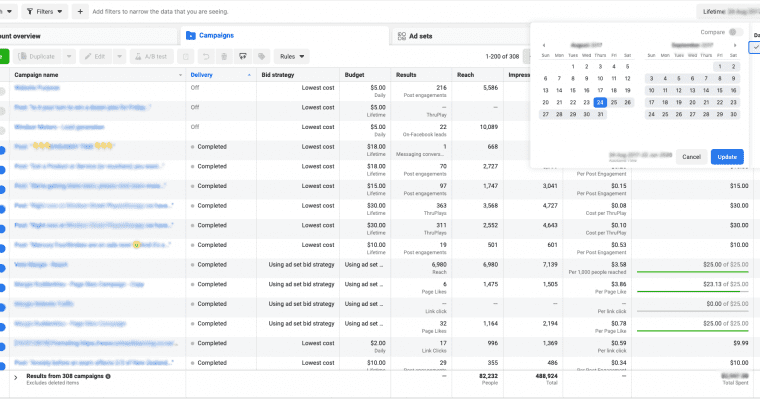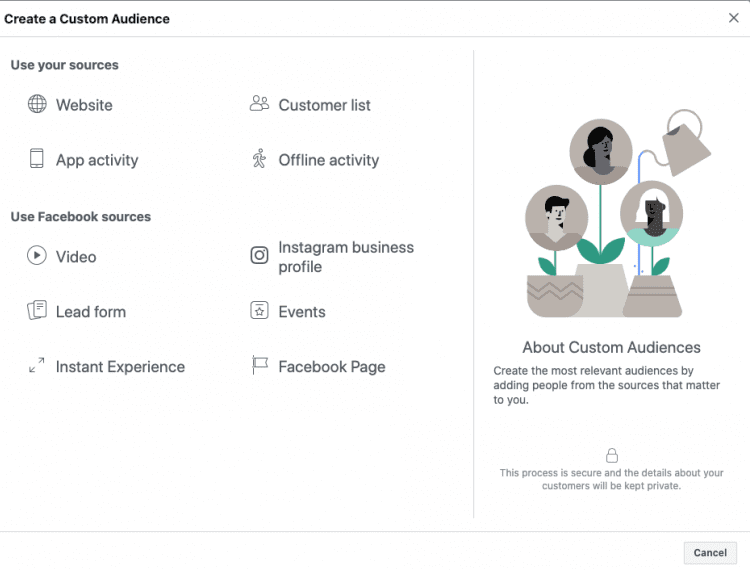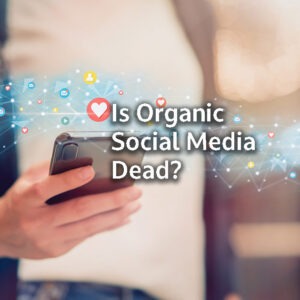All about Facebook Ads – Give your posts a boost!

Suggested Reads
Filters
Results
Facebook is the de facto social media platform, with over 2 billion active users. Naturally, it was only a matter of time before it also became one of the most powerful ways for businesses to advertise to potential customers. Enter Facebook Ads. Once you have a business page, Facebook makes it easy to advertise on the platform with that attractive blue Boost Post button will you can throw a few bucks at your post to increase the reach, and hopefully, the engagement. Seems pretty straightforward, right?
If that’s the only way you run ads, then yes, it is. But they also won’t be nearly as effective as going deeper into the system. Facebook has an incredibly large range of tools for advertising and some of the best targeting systems on Planet Earth; if you know how to use them right. In this article, we’re going to skim the surface of some of these different tools and how they can give your posts a boost to reach the people that want to see them.
All of these methods involve using the Facebook Business Manager. If you have a business, we highly-recommend using Business Manager instead of just a page if you want to do marketing on Facebook for more than just an occasional boost now and then. But if you’re going to make use of the additional marketing options, it’s well worth the effort!
The Facebook Pixel
Before going too far into the deep, we need to talk about the Facebook Pixel so that all of your juicy data will be stored for you to use later. Facebook Pixels are little bits of code that Facebook can use to track information, such as how many people click on your ad and where they come from. This information is retrieved when an image is loaded that is a single pixel in size (so too small to see).
Putting this Pixel on your website will also let you attribute conversions such as phone calls and purchases to your Facebook ads, so that you can see how effective they really are instead of having to make a guesstimate. Facebook has a short guide to show you some of the things the Pixel can do for you and why you should have one set up, especially if you have a website.
Who’s your audience?
Who you think your audience is and who is actually your audience may be two different groups. This can be a complex topic and one we can help you out with at Back9 through a Buyer Persona/Target Market Workshop. And business owners are sometimes surprised at what they find out!
Once you have your audience down, you’ll notice that they share some similar characteristics. It might be that they’re all around 45-60 years old. Maybe they skew male. Maybe they tuned in to watch the series finale of Game of Thrones and were disappointing with the ending. Facebook audiences can go extremely in-depth… But demographic targeting is only the tip of the iceberg.
Facebook Ads Manager
Boosting a single post is relatively simple and intuitive. Facebook Ads Manager, on the other hand, will probably look very intimidating to a new user. Take a look and see for yourself.

Yes, there’s more to it in every direction too. Facebook Ads Manager is a massive system with a plethora of options, including different options for budgeting, targeting, ad delivery, and ads creative. Taking the time to learn and understand these options can make your ads much more effective–and save you money too. But to do this, you need to take the time to understand demographics targeting, custom audiences, and lookalike options. There are also several objectives for ads like aiming for page likes, purchases, clicks, and engagement (video views, shares, post reactions, etc).
Interests and demographics targeting
The standard and most basic way to target people is through interests and demographics. As long as people are accurate in their profile, (instead of putting date of birth as January 1, 1900 when they’re clearly in secondary school) and like pages of things they’re interested in, then the targeting does a great job. Facebook also makes educated guesses on people’s interests based on posts they interact with. However, you can still miss out on people who haven’t yet added interests or liked certain pages.
Imagine you’re trying to sell building supplies to home builders, so you choose the “Home construction” interest. But the most prominent builder in your area instead only put an interest of “Custom Builder”, another option. If you don’t put in that “Custom Builder” option, that person may never see your ads.
Likewise, if people don’t update their profile for a while, you could be making location-specific ads to people who have since left the city you’re targeting… Or even the country. So while although the targeting tools are powerful and specific, they’re still limited by what information people include… Which is why Lookalike Audiences and Custom Audiences can take your targeting to the next level.
Lookalike Audiences
If you want to, you can think of every possible characteristic of your ideal customer, like their age, marital status, income bracket, education level, and so on, then put in all that data manually and make an audience like that. Sometimes narrowing down manually can be the best option, but if you end up having 65 different options, you’ve either done a super good job, or limited it down to a handful of your friends and family.
Lookalike Audiences take some of the guesswork out of creating audiences by having them based on data you already have. The most common places to get this data is from people who visit your page or who visit your website. When you have a Facebook Pixel on your website and also connected to your ad account, lookalike audiences can be an extremely useful option.
One of the options you have for a lookalike audience is website visitors. Not only can the Pixel show remarketing ads to the people who actually visited your website, but it will also take note of the characteristics that your website visitors have in common and create a group based on them. Then you can create ads that are only shown to this group, and you’re likely to see your sales and engagement skyrocket!
Custom Audiences
Like the name suggests, custom audiences are audiences that are… Customised. What this means is that you aren’t sending your post out to random people, but instead directing it towards people of your choosing. With a custom audience, you build a group based on one of ten different sources, as shown by the image below.

Along with your own sources like your website and app (if you have them), Facebook has ways of helping you create audiences with their own sources. Video, for example, lets you segment by people who watched from 3 seconds to 95% of one of your videos in a timeframe of your choosing. Facebook Page lets you choose by people who visited, like, or engage with your page, along with other options.
Perhaps the most important is the Website source. Choosing Website lets you combine data from your website with your Facebook page, meaning you can reach large segments of people you may have never gotten to through Facebook otherwise. It’s also a powerful tool for remarketing. You can create an audience of people who looked at a product on your website or added it to their cart but didn’t purchase. Then, you can show them an ad for that product, a strategy that is shown to have one of the highest conversion rates by reminding people to buy something they already showed an interest in.
Why can’t I find where to make Custom and Lookalike audiences?
As we mentioned at the first of this article, Business Manager is an important part of creating advanced, targeted Facebook Ads. You won’t find where to make Lookalike and Custom audiences on the normal Facebook interface. In Business Manager, Audiences is its own section that you can find by clicking the Busines Manager three-line hamburger icon and choosing the Audiences icon under Shortcuts. From there, go to “Create Audience” and follow the prompts to create Custom and Lookalike audiences.
Campaign Objectives
Campaign Objectives are probably the most important reason to use Facebook Ads Manager over boosted posts. With a boosted post, you’re simply sending your post to a wider audience. With campaign objectives, you’re doing the same, but with a specific goal in mind.
Awareness Goals
Facebook ads have two Awareness options: Brand Awareness and Reach. Brand Awareness shows your ads to people who are most likely to remember them. This helps people to recognise your brand. The other option is Reach. Reach is similar to boosted posts, and gets your post out to a larger group than if you didn’t pay for the boost.
Consideration Goals
There are 6 different conversion goals in Facebook Ads Manager:
- Traffic. Traffic sends people from Facebook to somewhere else. This can be your website, your app, or simply your Facebook Business Page. Use this if you’re looking to get eyes on something specific.
- Engagement. This is a step up from traffic. With engagement, you want people to see your post and then do something. Sub-categories include Post Engagement, Page Likes, and Event Responses. Choose this if you want people to do more than glance at your post. Engagements are more expensive than traffic, but can also do more for your brand.
- App Installs. If your business has an App, this goal sends the ad to people likely to install it. Sub-categories include automated app ads (the algorithm makes ads) or App ads (manually-created ads).
- Video Views. Videos are the most engaging kind of content. Use this to get views and possibly shares–videos can go viral if they’re done right! And this objective is a great way to get the snowball rolling.
- Lead Generation. Once you’re ready to get actual leads from your ad, try out this campaign objective. Prospects will have to complete a form to be registered as a lead. This is a good option when you have a solid lead pipeline workflow and have a plan in place to get in touch with these leads or send them content that may help them with their decision to work with you.
- Messages. Messages are Facebook Messenger messages specifically. If you want people to send you enquiries on Facebook, try this. It can be very powerful when combined with automation like automated messages or ManyChat.
Conversion Goals
Conversions are for the final step of the Buyer’s Journey. These can help people decide that now is the time to work for you. Many businesses focus solely on Conversion goals, but they tend to work best when combined with Awareness and Consideration ads too. Focusing only on conversions without setting up the framework can mean you spend a lot of money for few results. Be sure to have a plan in place like a solid website or lead pipeline when choosing these campaign objectives.
Facebook has 3 different conversion options:
- Conversions. Facebook defines conversions as a target action a person takes. Standard conversions are things like visits to a specific page, a contact form on your website filled out, signing up for a newsletter, or starting a free trial. But you can set up custom conversions too. These can be defined through the Facebook Events Manager tool or by having a developer set up conversion tracking code. It’s important to set these up before doing a campaign targeting conversions. If you don’t, you won’t know if the conversions are working; the ad will say there are always 0 of your target conversion. Even if someone did do the conversion action–the ad won’t know it if there’s no data telling it that the conversion happened.
- Catalogue sales. These are for eCommerce sites specifically. If you can sell products online, you need to connect your website catalogue to your Facebook ad account. This can be done through the Catalogue Manager in Business Manager. Setup can be a bit tricky though and requires a lot of permissions. You’ll need to be the Owner of the Facebook Page, the Catalogue, and the Ad Account to setup Catalogue Sales. Alternatively, you can create a Facebook Shop and make sales directly on Facebook instead. Find out more about how to set up a shop on Facebook here.
- Store Traffic. This campaign objective is to send people to your physical store. The ad will pop up when someone is in a certain proximity (that you set) to your store. If they have Facebook active and then visit your store, it will count towards your Store Traffic goal. In order for this to work, you need to add your store details. These ads tend to use the “Get Directions” call-to-action to get someone nearby interested and to visit your store.
Facebook Targeting and iOS 14
Facebook and Apple have been rivals for over a decade. The release of iOS 14 is the next level of their rivalry. After exposés like The Social Dilemma, Facebook has been under fire for privacy concerns and manipulative tactics to keep users on the site. Apple responded to these kinds of allegations against Facebooks in their iOS 14 operating system update.
In iOS 14, many of the standard tracking tools listed above will stop working as they have in the past. When someone opens an app like Facebook, they’ll be prompted to check whether or not they agree to data collection. If they do, existing methods of tracking won’t be affected. But if they choose no, much of the data won’t be available.
There are two schools of thought when it comes to tracking for ads: The first is that targeted ads are useful and helpful. These people believe that if they’re going to see ads anyway, why not have it be something they might want? By seeing what you’re looking for, these ads can help you solve problems you’re having. This is what companies like Google and Facebook believe.
The second group thinks that targeted ads are intrusive and a violation of privacy. How can these companies know what you want if you’ve never searched for it? Their multi-million dollar algorithms know a lot about you. But these people would rather have that data collection limited–even if the ads are more generalised. This is what companies like Apple and Duck Duck Go believe.
How will iOS 14 affect Facebook Ads?
Without opting-in to tracking, ads will no longer be based on their interests and past activities. Many people will choose not to opt-in to data collection when they update to iOS 14. As a result, ads overall will be less effective than they used to be. Expect to need a higher spend to achieve the same kinds of results, unless Facebook drastically lowers costs for running ads, which is very unlikely.
Done right, Facebook ads can be a huge boost!
There’s a lot that goes into doing Facebook ads properly. But if you spend the time to learn the platform, they can deliver huge results. And we’ve seen many businesses have success through these ads.
Typically, when we set up everything correctly for a business, we’ll see about an 8x return on ad spend for eCommerce conversions. This means that if you’re using the Catalogue Sales conversion and spend $100 on ads, you’ll get about $800 worth of sales. People with a larger following can get even higher results. For one popular Facebooker, we saw a 16x return on ad spend through Remarketing.
However, this success comes from proper setup. You also need a basic understanding of setting up tracking code, or work with a developer who does. Or you can let the experts handle it for you. At Back9 Creative, our team has set up Facebook Ads for dozens of clients. We can help you set up an ad account, conversion tracking, and help you choose the best campaign objectives for your goal. Get in touch with us today to find more about how we can help your business through Facebook Ads.
Fill out the form below to download our eBook, How to Monitor Social Media in 10 minutes a day!



